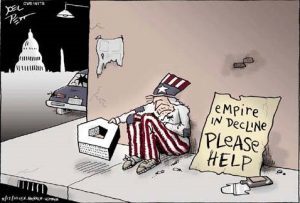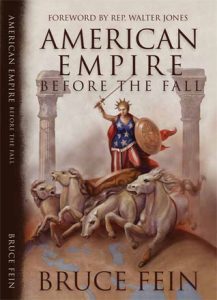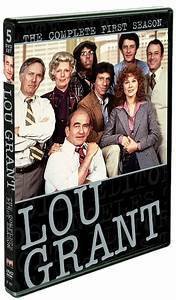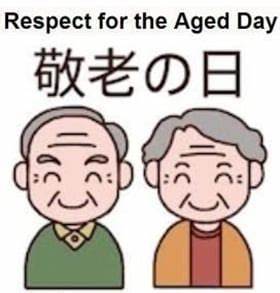Ronald E. Yates's Blog, page 47
September 10, 2021
Is the American Empire Collapsing? (Part 2)
Here is Part 2 of my original post on the collapse of the American Empire.
When former President Obama scrapped the U.S. Manned Space program via Presidential fiat back in 2011, he signaled to the world that the U.S. was ceding its leadership and expertise in space exploration to nations like China and India.
In one of the most arrogantly oblivious declarations, any president ever made he said he was ending the Constellation manned lunar landing program because “we’ve been there before.”
Instead of sending more Americans to the moon, he talked about possibly landing men on an asteroid in 2025 or perhaps Mars at some later date.
Our friends the Chinese were no doubt ecstatic at this announcement.
They have already embarked on a Lunar Exploration Program that will send both robots and men to the moon by 2025. In 2011, a Chinese rocket carried a boxcar-sized module into orbit, the first building block for a Chinese space station that was completed in 2020–the same year that the International Space Station, which is jointly operated by the U.S., Russia, Canada, Japan, and 11 European countries, was scheduled to be de-orbited.
 China’s Space Station
China’s Space StationIn early October a Long March 3C rocket with the Chang’e-2 probe took off from Xichang launch center. The Xinhua News Agency said Chang’e-2 would circle just nine miles above the Moon’s rocky terrain in order to take photographs of possible landing locations.
It is China’s second lunar probe – the first was launched in 2007. The craft stayed in space for 16 months before being intentionally crashed onto the Moon’s surface. This year the Chinese began mapping the entire surface of the moon with orbiting vehicles and in 2012 it will land lunar rovers that will begin prospecting for strategic materials.
Chinese scientists believe the moon is loaded with base metals and something called “lunar helium-3,” considered a perfect fuel for nuclear fusion power plants.
Robert Bigelow, the founder of Bigelow Aerospace, the company he created over a decade ago to develop commercial space habitats using expandable (or inflatable) technology licensed from NASA, insists this is just the beginning of what he fears is an attempt by China to actually claim the moon as its own territory, locking out the United States and other nations.
One obvious obstacle is the Outer Space Treaty, of which China is a party. That treaty prohibits nations from making territorial claims to the Moon or other celestial bodies. Bigelow suggested, though, that China could work to amend the treaty through the support of countries in Africa and Latin America where China is making major investments and who routinely vote against the United States in international bodies such as the United Nations.
Alternatively, he said, China could simply decide to withdraw from the treaty. Public opinion, he said, won’t be a factor. “There isn’t going to be World War Three over this,” he said. “There isn’t going to be a single shot fired.”
 China’s Lunar Lander on the Moon
China’s Lunar Lander on the Moon
Here is what the U.S. can expect, thanks to our myopic U.S. president: Soon, the only people walking around on the moon will be Chinese, and don’t expect them to share any significant base metal or lunar helium-3 finds. That is simply not the DNA of a hard-core Communist regime that controls China.
As Bigelow said in a recent talk to the International Symposium for Personal and Commercial Spaceflight (ISPCS) in Las Cruces, New Mexico:
“China’s quest for prestige—to demonstrate that it is the most powerful country in the world—will inevitably drive the country to lay claim to the Moon. China already has a grand national vision. Their vision is that China wants to be indisputably number one in the world, measured any way you want to measure.”
One of the biggest advantages of the Chinese system is that they have five-year plans so they can develop well ahead, said Peter Bond, consultant editor for Jane’s Space Systems and Industry.
“They are taking a step-by-step approach, taking their time and gradually improving their capabilities,” Bond said. “They are putting all the pieces together for a very capable, advanced space industry.”
Meanwhile, NASA closed out its 30-year space shuttle era in 2012, leaving the U.S. dependent on hitching rides to the space station aboard Russian Soyuz capsules at a cost of $56 million per passenger, rising to $63 million or more today. The U.S. also hopes private companies will develop spacecraft to ferry cargo and crew to the space station.
China is not the only country aiming high in space. Russia has talked about building a base on the moon and a possible mission to Mars but hasn’t set a time frame. India, which has already achieved an unmanned orbit of the moon, is planning its first manned space flight in 2016.
To be sure, space exploration is expensive. But to intentionally abandon leadership in an area where the U.S. has been a leader is simply misguided.
When President Kennedy announced in 1961 that the U.S. would land a man on the moon by the end of the decade because “we choose to,” it was a statement dripping with optimism that instilled pride and confidence in the American people.
His words seem as relevant today as when President Kennedy spoke them 56 years ago. Take a look at this excerpt:
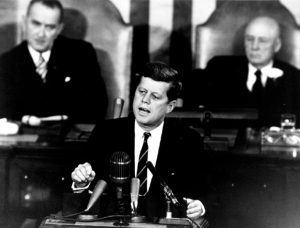 President Kenndy “We choose to go to the moon…”
President Kenndy “We choose to go to the moon…”“We set sail on this new sea because there is new knowledge to be gained, and new rights to be won, and they must be won and used for the progress of all people. For space science, like nuclear science and all technology has no conscience of its own. Whether it will become a force for good or ill depends on man, and only if the United States occupies a position of pre-eminence can we help decide whether this new ocean will be a sea of peace or a new terrifying theater of war.
We choose to go to the Moon! We choose to go to the Moon in this decade and do the other things, not because they are easy, but because they are hard; because that goal will serve to organize and measure the best of our energies and skills, because that challenge is one that we are willing to accept, one we are unwilling to postpone, and one we intend to win.
Fifty years later Obama chose to eliminate manned flights to the moon and concede lunar exploration to the Chinese. Not a move that instills pride and confidence, let alone optimism.
While the investment in space exploration alone does not signal the end of the American Empire, the fact that we are abandoning it says a lot about American leadership—or the lack thereof.
What made the American Empire remarkable was its refusal to accept defeat, to take a back seat amongst nations, to merely observe history instead of making it.
It is easy not to do something because it is difficult or expensive, but effective leadership requires that we not give up no matter how difficult or what the cost
If we do, then the American Empire is destined for the ash heap of history just as Rome and countless other empires were.
I hope I’m not around to see it.
September 9, 2021
Is the American Empire Collapsing? (Part I)
Now that the United States has slinked out of Afghanistan following yet another ignominious defeat reminiscent of its “lost crusade” in Vietnam, people are asking the question: Is this the end of the American Empire? Is the United States done for? Did we meet our match in the fundamentalist Muslim terrorists who now run Afghanistan?
And what of ascendent China? Will it replace the United States as the preeminent political and military power in the world? Some say it already has. I’m not so sure. But I have to admit, with yet another administration that seems content to “lead from behind” and that is obsessed with everything BUT projecting power and leadership in the world, America seems to have lost its way.
Feckless leadership in the White House is one reason, but there are many others. A couple of years ago I posted about the collapsing American Empire. I took a look at that post the other day, and guess what? Nothing much has changed, except for the fact that we were run out of Afghanistan, tail between our legs, by a ragtag collection of Taliban terrorists.
Here is that post. I hope you will find it interesting.
In the late 1980s, most political pundits were writing off the United States as the preeminent economic power in the world.
Japan, they insisted, had supplanted the U.S. as #1, and Americans watched as Japanese, rife with cash, bought up trophy properties from New York’s Rockefeller Plaza to the fabled Pebble Beach Golf Course in Carmel, California. Japanese secretaries flush with a super-strong Japanese Yen were buying up condos overlooking New York’s Central Park and along the Malibu coastline.
The hysteria was palpable. America soon was going to be owned by the Japanese.
I was in the middle of this hysteria, living in Tokyo as the Chicago Tribune’s Chief Asia Correspondent. I have to admit as the plethora of books and news stories about the new Japanese Super State flooded the planet, it was difficult not to buy into the credence of these arguments.
America, the experts droned on, had lost its competitive edge. Its people were soft, lazy, and inept. The American Empire was in decline–another Great Britain, losing its status and stature around the world.
Then along came 1990-91 and the over-inflated Japanese economic bubble, engendered by a grossly over-valued real estate market, burst. Within a few years, the U.S. regained its competitive edge, and its economy embarked on a decade of unprecedented growth. Meanwhile, the Japanese economy has yet to recover fully.
Of course, that is not the end of the story. Today the U.S. is once again teetering on the brink of economic catastrophe and this time China is perceived as the nation poised to supplant America as the world’s most powerful economy.
Now anybody who has been to China has to be impressed with the progress that country has made. New cities, new buildings, new roads, new industries—all of these things add up to a country on the rise. No argument there.
But travel out of the cities, and you see a different China. This is a nation in which some 150 million people are living below the United Nations poverty line of $1 (that’s “one” US dollar) a day and nearly 500 million Chinese live on less than $2 a day, according to the China Development Research Foundation.
The Foundation also reports that nearly 85% of China’s poor live in rural areas, with about 66% concentrated in the country’s west and they share less than 12% of the country’s wealth. Only about 55 million Chinese (out of a population of some 1.2 billion) are considered middle-class.
Meanwhile, the U.S. trade deficit with China has surged over the past three decades, as U.S. imports from China have grown much faster than U.S. exports to China. That imbalance rose from $10 billion in 1990 to $347 billion in 2016. For 2017 the U.S. trade deficit with China is already at $204 billion and is projected to surpass the 2016 figure.
According to the Congressional Research Service, during the past decade, China has been the fastest-growing market for U.S. exports. U.S. imports of low-cost goods from China significantly benefit U.S. consumers by increasing their purchasing power. U.S. firms that use China as the final point of assembly for their products, or use Chinese-made inputs for production in the United States, can lower costs and become more globally competitive.
China’s purchases of U.S. Treasury bonds (which stood at nearly $1.2 trillion at the end of 2016) help keep U.S. interest rates relatively low. Ditto Japan, which owns about $1.1 trillion in U.S. Treasury securities.
On the other hand, many analysts argue that growing economic ties with China have exposed U.S. manufacturing firms to greater, and what is often perceived to be “unfair” competition from low-cost Chinese companies. They argue that this has induced many U.S. production facilities to relocate to China, resulting in the loss of thousands of U.S. manufacturing jobs. Some policymakers have also raised concerns that China’s vast holdings of U.S. government debt may give it leverage over the United States.
These are all valid points, and they tend to mirror the same concerns that existed between the U.S. and Japan in the 1980s–but only up to a point.
Since the end of World War II, Japan has been an American ally–a bulwark for the projection of U.S. military might in Asia. China, on the other hand, has opposed the American military presence in the region and especially criticized U.S. support of Taiwan, which it considers a rogue province.
Unlike China, Japan is a nation built on post-war capitalism–albeit a more managed model than the type practiced in the U.S. The government in China is still a hard-core Communist regime that would like nothing more than to see the free market capitalist democracy in America fail.
Thus, the relationship between China and the U.S., while mostly friendly since diplomatic ties were re-established in the early 1970s, often has been strained.
Never was that more evident than after 1989 and the Tiananmen Square massacre–an event that I covered for the Tribune. After the Chinese government slaughtered some 2,000 to 3,000 students and pro-democracy protesters in the heart of Beijing in June of that year, Washington finally began to take the issue of human rights violations in China seriously.
It continues to do so, though the Chinese government sees any criticism of how it handles anti-government and anti-communist protesters as an internal issue with which the U.S. has no business interfering.
Give China points for creating a robust, semi-capitalist economy that has been built on enticing technology transfer from places like Europe, the U.S., Japan, and South Korea. Give it points for refusing to buckle under to demands that it revalue its currency, so its products are no longer dumped on international markets.
And finally, give it points for looking ahead while political leaders in the U.S. seem mired in the past, content to concede space exploration to minor nations and allow energy independence to languish while greedy Middle Eastern sheiks hold us hostage.
While we squabble about the direction of capitalism, the redistribution of wealth, and a plethora of questionable social re-engineering schemes in our military, our competitors (i.e., China) are innovating, moving forward, and prospering.
It makes you wonder.
NEXT: Is the American Empire Collapsing? (Part II)
September 3, 2021
Author C. S. Lewis Provides Sage Advice From the Past
C.S. Lewis, author of The Screwtape Letters, The Chronicles of Narnia, and The Space Trilogy, had some sage advice in 1948 as the world was entering the atomic age. Atom bombs had been dropped on Hiroshima and Nagasaki three years before and as a result, World War II came to an abrupt halt.
Now, the world was terrified that a devastating new weapon might be utilized by warring nations, thereby initiating something known as mutually assured destruction. There was a lot of hand-wringing as the thought took hold that global nuclear obliteration might ensue at any time.
In 1948 Lewis was a professor at Oxford University and president of the Oxford Socratic Club. In 1954 he left Oxford to accept the newly-created Chair in Medieval and Renaissance Literature at Cambridge University’s Magdalene College. Lewis died in 1963 at the age of 64.
Take a look at what Lewis wrote 73 years ago. It still rings as true today in our Covid-infected world, as it did then. If you replace the words “atomic age” with “COVID-19 age” you can see how Lewis’s short essay makes a lot of sense for us today.
“On Living in an Atomic Age,”
By C. S. Lewis
“How are we to live in an atomic age?’ I am tempted to reply: ‘Why, as you would have lived in the sixteenth century when the plague visited London almost every year, or as you would have lived in a Viking age when raiders from Scandinavia might land and cut your throat any night; or indeed, as you are already living in an age of cancer, an age of chronic pain, an age of paralysis, an age of air raids, an age of railway accidents, an age of motor accidents.’
In other words, do not let us begin by exaggerating the novelty of our situation. Believe me, dear sir or madam, you and all whom you love were already sentenced to death before the atomic bomb was invented: and quite a high percentage of us were going to die in unpleasant ways.
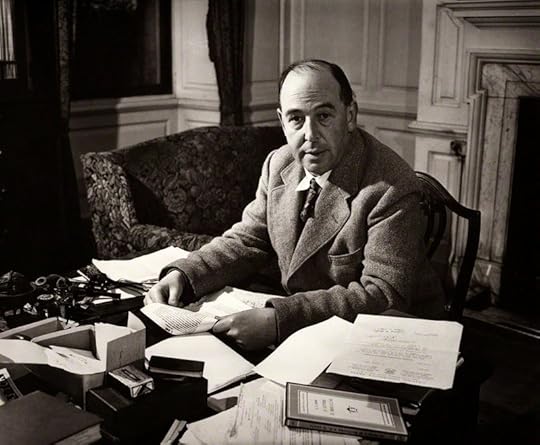
It is perfectly ridiculous to go about whimpering and drawing long faces because the scientists have added one more chance of painful and premature death to a world which already bristled with such chances and in which death itself was not a chance at all, but a certainty.
The first action to be taken is to pull ourselves together. If we are all going to be destroyed by an atomic bomb, let that bomb when it comes find us doing sensible and human things—praying, working, teaching, reading, listening to music, bathing the children, playing tennis, chatting to our friends over a pint and a game of darts—not huddled together like frightened sheep and thinking about death. They may break our bodies (a microbe can do that) but they need not dominate our minds.”
Okay, here’s how I read Lewis’s essay. Contrary to what the media, political pundits, Congress, and some self-styled medical “experts” continually tell us, we shouldn’t let COVID, or the ever-present specter of terrorism, or the fear of an uncertain future take up residence in our consciousness.
Instead, we should continue to live our lives and not allow ourselves to be dominated by the ever-present threats that surround us. To do so, allows us to fall prey to the burdens of life that depress us, rather than the joys of life that uplift and encourage us.
What say you?
September 2, 2021
Lou Grant aka Ed Asner is Gone. RIP
When I learned that actor Ed Asner had passed away at the age of 91 the other day, I couldn’t help thinking about the old “Lou Grant” television series in which Asner played the gruff and curmudgeonly city editor of the fictional Los Angeles Tribune.
By the way, in case you were wondering, all city editors are gruff and curmudgeonly—even the women who portray them. It is de rigueur for the job.
I, myself was both an assistant city editor and metro editor (an inflated version of a city editor) at the Chicago Tribune. But that is another story for another time.
The Emmy-winning Lou Grant series ran from 1977 to 1982 and at the time I was based in Los Angeles as the West Coast Bureau Chief for the Chicago Tribune.
My office was in the Los Angeles Times building so naturally, I was curious about any television series that portrayed the newspaper business.
I admit I watched the show assiduously, looking for any flaw in the reportorial skills of the Tribune’s two principal general assignment reporters, Joe Rossi, played by Robert Walden, and Billie Newman, played by Linda Kelsey.
I was intrigued by the kinds of social and journalistic issues the show examined. For example, the show looked at the kinds of ethical questions that often arise in newspaper newsrooms—issues like entrapment of sources, checkbook journalism, plagiarism, conflicts of interest, and staging stories and photos.
Naturally, as all good reporters do, they got into occasional squabbles and spats over stories with their immediate boss, the irascible Lou Grant, who also provided guidance and mentorship for the two general assignment reporters.
Rossi and Newman were also fierce rivals and competitors, as is often the case at big-city newspapers.
Lou Grant was the consummate newsman. He arrives in Los Angeles after being fired from WJM-TV in Minneapolis at the end of the Mary Tyler Moore Show. His friend, Charlie Hume (played by Mason Adams) is the Tribune’s managing editor and hires Grant as the paper’s city editor. We learn that Grant began his career in journalism as a print journalist, not a TV producer.
Right away, I felt a kinship with Lou Grant. This was a television character I could like.
As it turned out, I met Ed Asner one day while having lunch in a Los Angeles restaurant with a producer.
“You look just like Lou Grant, the city editor of the Los Angeles Tribune,” I quipped, shaking his hand.
“Yeah, I get that a lot,” Asner responded.
My producer friend explained that I was the Chicago Tribune’s West Coast bureau chief based in Los Angeles and that I also had the largest beat any journalist could have.
“In addition to the West Coast, Ron covers Asia and Latin America,” the producer said.
Asner’s eyes widened.
“You’re a foreign correspondent based in Los Angeles?” he asked. “Is that even possible?”
I explained that I had been posted to Tokyo and had covered the fall of Cambodia and Vietnam in 1975, as well as many other countries in Asia, so I had some experience in the area. Latin America, however, was a new part of my beat.
We chatted a little while longer about journalism in general and finally, Asner asked me what I thought of the L. A. Tribune newsroom as portrayed in the series.
“Whoever created the set did a good job,” I said. “But if you want to see a REAL big city newspaper newsroom, you need to go to Chicago and visit the Chicago Tribune. That’s a classic newsroom. It’s enormous and loud.”
Asner revealed that he was traveling to Chicago in a couple of weeks. I offered to let my editors at the Tribune know and said I was sure they would love to show him around Tribune Tower.
“I’ve walked by that building hundreds of times when I was a student at the University of Chicago and when I was part of the old Playwrights Theater Club. It’s a hell of a building.”
As we continued to talk we discovered we were both born in Kansas City.
Finally, I asked Asner if he had spent much time talking to reporters and editors at the Los Angeles Times to prepare for his city editor role.
“Yeah, all of the cast did,” he responded. “And you know what, I always thought actors had big egos until I began spending time with you reporters.”
I had to laugh at that.
I agreed. Many journalists do have outsized egos—especially foreign correspondents. Of course, I added, journalists may have big egos, but their salaries are small.
I then shared a quote about foreign correspondents from the English playwright and screenwriter Tom Stoppard.
“A foreign correspondent is someone who lives in foreign parts and corresponds, usually in the form of essays containing no new facts. Otherwise, he’s someone who flies around from hotel to hotel and thinks that the most interesting thing about any story is the fact that he has arrived to cover it.”
 (Photo by Tribune photographer Bob Fila)
(Photo by Tribune photographer Bob Fila)A few weeks later I learned that Asner had indeed visited the Chicago Tribune newsroom. The office sent me a photo of Los Angeles Tribune city editor “Lou Grant” (aka Ed Asner) standing in the middle of the newsroom with Chicago Tribune city editor Bernie Judge and day city editor, Don Agrella—three of the best journalists I have ever known.
“There’s only one thing wrong with your portrayal of a city editor,” said Bernie Judge (left) to actor Ed Asner (center). “Your phone just doesn’t ring enough.” Don Agrella (right) agreed.
Otherwise, television’s Lou Grant played the part perfectly, storming into the newsroom and bellowing to startled reporters,
“All right you turkeys, get to work.”
–30–
September 1, 2021
Respect for the Aged Day: Japan’s Unique National Holiday Honors its Elderly
Today, I am stepping away from the FUBAR disaster that has occurred during the past several weeks in Afghanistan, to something “completely different,” as they used to say on the old Monty Python TV show.
Instead of Afghanistan, I am taking you to Japan, where there is a national holiday called “Keirōnohi” (敬老の日). That’s “Respect for the Aged Day” for all you non-Japanese speakers.
Japan may be the only nation in the world that actually has created a national holiday to honor and respect its older generations. It is held on the third Monday of September each year.
I spent almost 10 years in Japan as the Chicago Tribune’s Tokyo Bureau chief and Far Eastern Correspondent. During that time I can recall seeing Japanese families spending time together in parks, in hotels and ryokans for family lunches and dinners, or just strolling through Tokyo’s ubiquitous neighborhoods.
This unique holiday began in 1947, in a small town in Hyōgo Prefecture now known as Taka. The town proclaimed September 15th to be “Old Folks’ Day” (Toshiyori no Hi). Through the years, the holiday’s popularity spread to every corner of the country.
By 1966 it was proclaimed a national public holiday and was still celebrated on September 15th. Beginning in 1998, Japan introduced the “Happy Monday System.” This system moved public holidays to Mondays so people with 9-to-5, Monday-to-Friday jobs could have more three-day weekends. In 2003, Respect for the Aged Day was moved to the third Monday of September.
Japanese who have grandparents or elderly parents have the opportunity to make the day special by taking them out for a meal or simply by spending time together. Even if they can’t be together in person, they can still give them a call and let them know how much they care and are missed.
Japan’s population has the greatest life expectancy in the world, with an average of 82.6 years (79.0 for men and 86.1 for women). According to recent statistics published by the Japanese Ministry of Health, this year the number of people 100 years old or older surpassed 40.000, with 86.5% of them women.
The oldest man in Japan is 112 years old and lives in Kyoto Prefecture south of Tokyo, while the oldest woman is 114 years and lives in Okinawa.
The secret to longevity in Japan is likely the healthy Japanese diet, which is low in foods containing heart-damaging trans fats and sodium and high in fresh vegetables and fatty fish such as salmon, fresh tuna, mackerel, sardines, and herring that are a great source of heart-healthy omega-3 fatty acids.

In addition, Japanese people have the lowest obesity rate in the developed world — 3%–versus 11% for the French and 32% for Americans, according to the International Obesity Task Force. This is not a genetic trait, say dietary experts, because when Japanese people adopt a Western-style diet heavy in red meat, fast foods, and fried foods, they put on weight quickly.
Still, studies show that the average Japanese adult eats about 25% fewer calories per day than the average American, which could partly explain their lengthy lifespan.
But another reason just may be the way elderly Japanese are treated in Japan’s tradition-rich society. When we used to walk through our Japanese neighborhood in the Fukazawa area of Tokyo, we frequently saw grandparents living with their children and grandchildren—often in traditional Japanese-style houses that were less than 1,000 square feet in size.
While such extended family lifestyles are not as common in Japan as they once were, there is nevertheless an unmistakable reverence for those 70 and older—especially in smaller cities and villages where the pace of life is much slower.
It is always risky to generalize about entire nations and ethnicities. Even so, I always felt that the Japanese treated their aging folks with greater regard and veneration than almost any other place I have visited or lived.
That impression is reflected in Japan’s Respect for the Aged Day, which is all about respecting and appreciating your elders.
That’s a mindset that seems to be missing in America’s youth-obsessed, self-indulgent culture where the elderly are often shunted off to nursing homes or confined to geriatric facilities which I consider nothing more than warehouses for the dying.
August 30, 2021
What We Left Behind in Afghanistan: Billions in U.S. Military Weapons & Material
By now you have heard about the military weapons, vehicles, aircraft, drones, and classified technology, and encrypted communications equipment the feckless and incompetent Secretary of Defense and the chairman of the Joint Chiefs of Staff left behind for our new friends the Taliban in Afghanistan.
Clearly, the deaths of 12 U.S. Marines and a Navy medical corpsman, not to mention some 170 Afghani civilians in the ISIS-K suicide bomb attack last week are of primary concern.
But the gift of some $35 billion in military hardware to an enemy American and coalition forces fought against for 20 years, cannot be ignored—despite the Pentagon’s desire to the contrary.
Whether all of that American military gear was intentionally or unintentionally left behind as Biden ordered a full-blown military bug-out, somebody wearing a uniform, such as Chairman of Joint Chiefs of Staff Gen. Mark Milley or Secretary of Defense Llyod Austin should be fired.
 Joint Chiefs Chairman Gen. Mark Milley
Joint Chiefs Chairman Gen. Mark MilleyOf course, that will not happen in a spineless and irresponsible Biden administration. Austin and Milley are more concerned with teaching American soldiers Critical Race Theory and eliminating “white rage” in the ranks than they are about warfighting.
Both seem convinced that the Marine Corps, the Army, Navy, Air Force, and Coast Guard are sated with “white supremacists”—an adversary even more dangerous than the Taliban, ISIS-K, or Al Qaeda.
Perhaps their obsession with rooting out “white privilege and fragility” in the military made them forget all of those American weapons and other military gear now in the hands of the Taliban—not to mention ISIS-K and Al Qaeda.
Oh well, who cares if we gifted the Taliban with Javelin missiles. Each one only costs $80,000—not counting the $125,000 launchers? Or what about those Stryker vehicles left behind? Baseline models only run $4.9 million each.
Then there are those F-15 fighters. They only cost about $87 million per copy and those UH-60 Black Hawk helicopters. Hell, they are a bargain at only $6 million each. Then there are some $200 million in high-tech drones that the Taliban can now use against us at some point down the road—or can give to the Chinese so they can reverse engineer them.
If you watched carefully last week, you saw videos of Taliban soldiers walking around with some of those 978,000 American M4 and M16 rifles, as well as M24 sniper rifle systems, and M2 .50 caliber machine guns. Some had night-vision goggles, radios, and magazine pouches hanging from their bodies while others tooled around Kabul in American Humvees and MRAPs.
According to a Government Accountability Office report, between 2003 and 2017 the United States transferred 75,898 vehicles, 162,643 pieces of communications equipment, 208 aircraft, and 16,191 pieces of intelligence, surveillance and reconnaissance equipment to Afghan forces.
But that’s not all. Between 2017 to 2019, the United States also gave Afghan forces 7,035 machine guns, 4,702 Humvees, 20,040 hand grenades, 2,520 bombs, and 1,394 grenade launchers, among other equipment, according to a report last year from the Special Inspector General for Afghanistan Reconstruction (SIGAR).”
White House national security adviser Jake Sullivan said last week that the equipment is lost to the Taliban, “and obviously, we don’t have a sense that they are going to readily hand it over to us at the airport.”
“We don’t have a complete picture, obviously, of where every article of defense materials has gone, but certainly a fair amount of it has fallen into the hands of the Taliban,” he added.
The Pentagon’s response to all of this: “We are always worried about U.S. equipment that could fall into an adversaries’ hands,” Pentagon Press Secretary John Kirby said. “What actions we might take to prevent that or to forestall it, I just simply won’t speculate about today.”
Clearly, no action was taken. None at all. Zip, Zilch.
 A Blackhawk for the Taliban
A Blackhawk for the TalibanLast week Maj. Gen. Hank Taylor of the Joint Chiefs staff was asked if U.S. troops on the ground were taking any action to “to prevent equipment from falling into the hands of the Taliban by destroying it.”
His bleak response: “I don’t have the answer to that question.”
So, essentially, the Biden administration, in cahoots with the idiots in charge at the Pentagon, has succeeded in turning the Taliban into a major U.S. arms dealer for the next 10 years or so.
The Taliban now control 75,000 military vehicles, including about 50,000 tactical vehicles, 20,000 Humvees, about 1,000 mine-resistant vehicles, and about 150 armored personnel carriers.
But more importantly, they have achieved an enormous psychological and propaganda victory, in addition to a military victory, over the United States.
Once again, the Biden administration is not concerned. No, bumbling, bungling Biden is more intent on tracking down white supremacists, domestic terrorists (AKA conservatives and Republicans), insurrectionists, and anybody who might have voted for Donald Trump in 2020 than he is about the gift of billions of dollars of American military gear to the Taliban and their terrorist compadres.
God only knows what caprice the Biden White House will treat the nation to next.
Perhaps our feckless president will give away the Statue of Liberty.
After all, with all these white supremicists running around the country, provoking insurrections, demanding a return to slavery, and Jim Crow elections, nobody will want to come to America ever again so why have the Goddess of Liberty wasting her time in New York harbor?
Let’s put her on a slow boat to Communist China. Now there’s an enlightened, nation that the socialist swamp creatures in Washington love. And while she’s there, maybe she can recover some of that mlitary hardware the Taliban will be giving to China.
In the meantime, take a look at the list of those military goodies we so graciously bequeathed to our conquerors in Afghanistan:
-2,000 Armored Vehicles Including Humvees and MRAP’s
-75,989 Total Vehicles: FMTV, M35, Ford Rangers, Ford F350, Ford Vans, Toyota Pickups, Armored Security Vehicles etc
-45 UH-60 Blackhawk Helicopters
-50 MD530G Scout Attack Choppers
-Scan Eagle Military Drones
-30 Military Version Cessna’s
-4 C-130’s
-29 Brazilian made A-29 Super Tocano Ground Attack Aircraft
=208+ Aircraft Total!!
-At least 600,000+ Small arms M16, M249 SAWs, M24 Sniper Systems, 50 Calibers, 1,394 M203 Grenade Launchers, M134 Mini Gun, 20mm Gatling Guns and Ammunition
-61,000 M203 Rounds
-20,040 Grenades
-Howitzers
-Mortars +1,000’s of Rounds
-162,000 pieces of Encrypted Military Communications Gear
-16,000+ Night Vision Goggles
-Newest Technology Night Vision Scopes
-Thermal Scopes and Thermal Mono Googles
-10,000 2.75 inch Air to Ground Rockets
-Reconnaissance Equipment (ISR)
-Laser Aiming Units
-Explosives Ordnance C-4, Semtex, Detonators, Shaped Charges, Thermite, Incendiaries, AP/API/APIT
-2,520 Bombs
-Administration Encrypted Cell Phones and Laptops ALL operational
-Pallets with Millions of Dollars in US Currency
-Millions of Rounds of Ammunition including but not limited to 20,150,600 rounds of 7.62mm, 9,000,000 rounds of 50.caliber
-Large Stockpile of Plate Carriers and Body Armor
-US Military HIIDE, for Handheld Interagency Identity Detection Equipment Biometrics
-Lots of Heavy Equipment Including Bull Dozers, Backhoes, Dump Trucks, Excavators
Oh well. It’s only taxpayer money. Who cares?
August 25, 2021
Say it Ain’t so, Joe! America’s Liar-in-Chief Paints a Detached Assessment of the Kabul Disaster
Joe Biden is a disgrace. He is feckless. He is a coward. He is a liar.
Yesterday, he went on television to talk about the disaster unfolding in Afghanistan.
But how did he begin?
He started by talking about the Democrat’s Build Back Better plan and all the “free stuff” he is going to give American voters. He talked about the climate crisis, corporate taxes, and the need for wealthy Americans to “pay their fair share.”
Where was Afghanistan?
But Biden was not finished with his attempt to shove the disaster unfolding in Kabul onto the political backburner.
He then talked about the Democrat’s unconstitutional attempt via HR-1 to appropriate America’s presidential elections from the states where they have resided since the founding of this country.
Finally, he talked about the elephant in the room—the elephant called Afghanistan.
Biden launched into a sunny and unrealistic teleprompter account of the evacuation of Americans and Afghanis from the Kabul airport that belied what Americans, Afghanis, journalists, and even some military are telling us on the ground in Afghanistan.
 Panic at the Kabul Airport
Panic at the Kabul AirportThis is Biden in his role of Liar-in-Chief—a role he has honed and polished for most of his 40 years as a Washington swamp creature. Biden, as those of us who have watched him for the four decades, is simply allergic to the truth.
During his blinkered homily, Biden essentially legitimized the barbarous rabble of terrorists known as the Taliban by describing ongoing talks as though he were engaged with a legitimate government.
The Taliban are NOT the legitimate government of Afghanistan. The legitimate government fled a week ago as the Taliban swept into Kabul with no opposition from the unreliable and useless Afghan Army.
 Taliban Leaders in Afghanistan’s Presidential Palace
Taliban Leaders in Afghanistan’s Presidential PalaceWhat exists in Afghanistan today is the result of a coup d’état, not a legally elected government.
Of course, Biden didn’t mention that little fact. Nor did he address the $30 billion in American weapons, vehicles, uniforms, planes, helicopters, and sophisticated drones gifted to the Taliban by his feckless and incompetent administration and incompetent Pentagon leadership.
No, the billions spent on weapons and training for the now-defunct Afghani government are not important when you are preparing to spend at least $4 trillion on a pork-filled spending package that Nancy Pelosi is desperate to ram through the House in an effort to secure votes for the 2022 midterm election.
 U.S. Military vehicles gifted to the Taliban
U.S. Military vehicles gifted to the TalibanWho cares that those weapons will likely be used against American troops if we ever have to return to Afghanistan to deal with an Al Qaeda 2.0 or a new ISIS army of terrorists?
Biden and his cadre of incompetent generals must be beaming at the thousands of Taliban soldiers who are now wandering around Kabul wearing American military uniforms, carrying American weapons, and chowing down on American MREs.
How proud they must be at that sight.
Meanwhile, tens of thousands of Afghanis who worked with and for Americans and other coalition military remain stranded—yes STRANDED—in Afghanistan despite Jen Psaki’s weedy and pathetic repudiation to the contrary.
Will they get out? And what of several thousand Americans who are—yes STRANDED—in their homes or struggling to get to the Kabul airport?
Our faint-hearted and spineless president didn’t mention them. Instead, he painted a rosy picture of a flawless, perfectly orchestrated, and orderly evacuation ongoing in Kabul.
Of course, those on the ground in Kabul beg to differ. They are desperate to get out from under the deadly fist of the Taliban and their terrorist surrogates.
What our incompetent and cowardly president did during his spoon-fed, detached-from-reality remarks Tuesday afternoon, was callous and disgraceful.
Once again, he lied to the American people.
Then, he turned on his heel as reporters shouted questions at him, and walked dismissively out of the room leaving the hot-button issue of Afghanistan up in the air.
Say it ain’t so, Joe.
August 24, 2021
Saigon 2.0: Is Afghanistan Withdrawal a Repeat of Vietnam?
Recently I was interviewed on Epoch TV’s “American Thought Leaders” show, hosted by Jan Jakielek about the similarities and differences between what is happening now in Afghanistan and what happened in Saigon in April 1975. Here is a link to that interview. It lasts about 30 minutes. I hope you will find it interesting. Ron Yates
August 22, 2021
A BOY GROWS UP FAST IN AFGHANISTAN: TRAINED TO KILL BEFORE HE’S A TEEN
Ocassionally, I post stories I wrote while working as a foreign correspondent for the Chicago Tribune. I filed the story that follows in Febrary 1987 after returning from a foray into Afghanistan with a warlord and his Mujahideen militia. The Mujahideen, who eventually morphed into the Taliban, were fighting the Russians who had invaded Aftghanistan in 1979. I was impressed by the incredible toughness of the men I was with. They were rugged, seemingly fearless, and incredibly dedicated to expelling the Russians from a country known as the “graveyard of empires.”
 Mujahideen in the Khyber Pass, 1987
Mujahideen in the Khyber Pass, 1987But what astonished me, even more, were the boys, some as young as 10, who were also fighting alongside the men. The story I filed is about one of those boys–a 12-year-old named Daoud Bahrami. It’s a story that never left me and when American troops invaded Afghanistan in 2001 in an effort to wipe out Al Qaeda and their Taliban supporters, I recall thinking: “Man, our troops are going to meet men who were once boys like Daoud–kids who were tough and committed and ready to make the supreme sacrifice. This is not going to be easy.”
And, as we now know, it wasn’t easy. In fact, after 20 years we are leaving without achieving anything close to a victory. Yes, we obliterated Al Qaeda and inflicted tremendous damage on the Taliban, but in the end, we lost–just as we did 47 years ago after a 10-year-long war in Vietnam in another land populated mostly by simple peasant farmers.
I hope you will read this story about Daoud Bahrami. It contains some stark lessons about Afghanistan and why that nation has earned the sobriquet “graveyard of empires.”
Feb 8, 1987
The Khyber Pass, Nangarhar Province, Afghanistan–Twelve-year-old Daoud Bahrami can’t remember exactly when he stopped being a child.
It might have been a year ago when he attached a magnetized time bomb to a Soviet truck in a convoy parked on the outskirts of Kabul and barely reached safety before it and the men inside were shredded by the explosion.
It could have been while running messages for the anti-Soviet Mujahideen (Holy Warriors) down the narrow, twisting streets of Kandahar with Soviet soldiers firing their Kalashnikov rifles at him.
Or it may have been that day 18 months ago when he woke up and discovered there just wasn’t time to be a child in a country being ripped apart by war.
 Daoud Bahrami & Father
Daoud Bahrami & FatherIn that respect Daoud is a lot like an estimated 1 million other Afghan children, half of them orphans, growing up in one of 314 refugee camps scattered along the Pakistani frontier while the seven-year-old war in Afghanistan rages.
But unlike most of his youthful peers, Daoud has not spent much time languishing in a camp for displaced persons. He is a child who has been trained to kill, who looks at you coolly, severely, with an unsettling lack of passion.
There was no way to corroborate his story, although adult guerrilla fighters said children frequently are used on such missions. Daoud’s own matter-of-fact manner added to his credibility. How many men, for instance, has he killed?
“Maybe one, maybe 10,” he says simply, speaking through an interpreter while sitting on the floor of the small Afghan carpet shop his family operates in Islamabad.
In most cases, Daoud never stayed around long enough to find out the extent of the carnage he created. His job was to use his size to creep as close as he could to unsuspecting Soviet troops, trucks, and tanks, throw his antitank bomb or hand grenade, and dash for cover.
That’s exactly what he did on his last assignment for the fundamentalist Jamiat-e-Islami, one of seven Mujahideen guerrilla groups trying to drive out the Soviet army.
As the sun was dropping behind the low hills that flank the edge of Afghanistan’s capital in mid-December, Daoud was handed an antitank weapon and a hand grenade by his commander and told to work his way close enough to several Soviet T-54s to “do some damage to the infidels.”
Daoud had done this before, so he knew just how close he would have to get to the “big brown iron beasts.”
“I tied the bomb here with my belt,” he said, pointing to the small of his back. “And then I crawled along the rooftops of maybe 15 buildings until I was looking down on the Russians and their tanks. I could see them laughing and trying to make friends with the Afghan people.
“Some of the Russian soldiers were trying to sell parts of their uniforms, like their belts and hats to the people so they could get money. The Russians are always trying to get money by selling something.
“There were three tanks and they were sitting still. I watched for about two minutes to make sure there were no more tanks or soldiers and I leaned over the edge of the roof and dropped my bomb into an open turret hatch. Then, I threw my hand grenade at a group of soldiers standing nearby.”
Daoud fled over the rooftops. After running about 20 yards, he was jolted off his feet by an earth-shattering eruption as the powerful antitank bomb ripped through the innards of the T-54. That was followed by another explosion as the hand grenade unleashed its lethal spray of shrapnel.
“I could hear the soldiers screaming and crying,” Daoud recalled. “Then they began shooting at the rooftops and into the houses with their Kalashnikovs. They were scared.”
Was Daoud afraid? Only that he would fail.
“I am not afraid to die,” he said. “In my heart, I would like to be a shaheed (martyr). So death does not frighten me. I welcome it.”
Daoud’s father, sitting on the floor nearby, beamed approvingly.
“If he goes to war and comes home alive, I will be happy,” he said, looking proudly at his son. “And if he goes to war and is martyred, I will be just as happy.”
Daoud’s brother, Hamad, 15, is more pragmatic about the war that has mutilated Afghanistan and its 15 million people since 1979 when 110,000 Soviet troops invaded. He wants to finish the school he and Daoud attend for Afghan refugees just across the border in Pakistan. He doesn’t want to go back to Afghanistan and the fighting–something he did for almost three years until he turned 15 a few months ago.
“When I think of my future these days I think of myself as a businessman, not as a soldier,” Hamad said.
“You are wrong, Hamad, you should be in the army and help drive the infidel Russians out of our land,” Daoud said, looking sternly at his brother.
“Everybody serves Allah in his own way,” said the boys’ father, rubbing his stubby beard. “If just one of my sons goes to the jihad (holy war) and is martyred, perhaps that is enough.”
Ameena, the boys’ mother, who was filling our small porcelain cups with freshly-brewed tea, shook her head.
“I do not want my sons to be martyred,” she said, her voice unwavering and resolute. “I want them to be free to live in peace.”
Daoud regarded his mother for a moment. “You must fight and make sacrifices to get those things,” he said.” And sometimes you must die.”
“Allah yuafiquna,” she muttered as she walked out of the room, shaking her head.
I looked at Daoud’s father. He translated:
“My wife said: ‘Allah help us.'”
But Daoud had the last word.
“Allah will not help us. We must help ourselves or live as slaves.”
August 21, 2021
When Does a Gap Become a Canyon? (Part 2)
Accomplished wordsmith William Safire once defined a gap between the generations as “a frustrating lack of communication between young and old, or a useful stretch of time that separates cultures within a society, allowing them to develop their own character.”
That’s a pretty good definition. But it doesn’t tell the whole story.
Generation gaps have no doubt existed on this planet since the first homo sapiens appeared about 200,000 years ago. However, the drastic differences that the term implies were not much in evidence until the twentieth century. Before that time humans were not very mobile. Young people typically lived near their extended families, worshiped in their childhood churches, and often worked on the family farm or in a family business. In the 19th Century, most people lived and died without traveling more than 200 miles from where they were born.
 Hippies In San Francisco
Hippies In San FranciscoWith the advent of television and movies, adolescents were exposed to cultural influences alien to their own families and cultures. Then came the 1960s. Civil rights, women’s liberation, and the Vietnam War exposed a more serious chasm between young and old.
A study released recently by the Pew Research Center found younger and older Americans see the world much differently, creating the largest generation gap since the tumultuous years of the 1960s. The study said Americans of different ages are increasingly at odds over a range of social and technological issues. That divide grew greater after the 2008 election when 18- to 29-year-olds voted for Democrat Barack Obama by a 2-to-1 ratio. It has continued to grow since the 2016 and 2020 elections.
Almost eight in ten people believe there is a major difference in the point of view of younger people and older people today, according to the independent public opinion research group.
The top areas of disagreement between young and old, according to the Pew Research Study, are the use of technology and taste in music. Slightly behind these areas of difference are listed the following:
Work ethicMoral valuesRespect for othersPolitical viewsAttitudes toward different races and groupsReligious beliefs.There is nothing new here. When I was a teenager Rock and Roll was considered “jungle music” and those who sang and played it were, in the minds of older Americans, little more than savages. Some radio stations wouldn’t play Rock and Roll. Elvis Presley, Chuck Berry, Little Richard, and Jerry Lee Lewis were considered evil influences on the youth of the day.
The 1950s were probably the beginning of what we know today as a generation gap. Before then the closets of most teenagers resembled those of their parents. Not so in the 1950s. That decade brought a revolution in styles that pushed the envelope and actually continues to influence fashion today.
A lot of guys combed their hair into greasy Ducktails, wore skin-tight jeans and shirts with the collars turned up. It was “the look” of the day.
Girls wore short-shorts, poodle skirts, ponytails, and, if you were lucky, did the “dirty bop” with you. (Believe me, it was tame compared to what happens on the dance floor today).
So what’s the big deal about the widening generation gap of 2017 and how does it differ from the gap that existed in the 1960s?
First, the Pew Study said, the two largest areas of difference–technology and music–are less emotionally charged than political issues. The older generation is likely to be proud of the younger generation’s skill in using new technology rather than to view it as a problem.
As for the musical differences, each generation wants its own style of music, and the older generation generally can relate to that desire–even if most people older than 50 probably consider hip hop a form of discordant monotone chanting rather than vocal or instrumental sounds organized in some coherent sequence comprised of melody, rhythm, and harmony.
In the other areas of difference, the Pew study reported, the younger generation tends to regard the older generation as superior to their own generation–clearly a difference from the 1960s with its rallying cry of “Don’t trust anyone over thirty.”
According to the study, all generations regard older Americans as superior in moral values, work ethic, and respect for others. Why are older Americans regarded as superior in moral values, work ethic, and respect for others? Does it have something to do with the way many children are reared today? If parents equivocate when it comes to teaching such values to their children then it is not surprising that a generation gap between young and old exists.
And who is at fault for that? The younger generation? I tend to think the fault rests with parents and those charged with educating the young. By the time they are adolescents, it is most likely too late to instill in them the values that are revered by older Americans.
One common complaint I hear from older Americans about younger Americans is their reluctance to accept responsibility for their actions.
“It’s not my fault,” is heard all too often from the younger generation. That, however, is a dangerous trap, said Doctors Henry Cloud and John Townsend in their 2007 book (“It’s Not My Fault”) because it not only keeps them from overcoming the effects of all that they can’t control—like other people, circumstances and genetics—but separates them from a solution. And when they give away the ownership of their life, they end up losing the one opportunity they have to fulfill their dreams and enjoy the best life has to offer.
When I was growing up my parents and grandparents simply never endorsed my attempts to use the “blame game” for my mistakes, misfortunes, and misdeeds.
“Stop making excuses,” is what I heard. Eventually, I did.
I never felt there was a generation gap between my parents and me, perhaps because I respected them and they never gave me a reason not to. If there is an area that can be improved on with young people today that may be it.
Children may be grateful in the short term when parents refuse to impose rules of behavior and inculcate discipline in them. But in the long term I believe they are thankful–even if they may never admit it.
Learning to respect others, to honestly work for what you get in life, and to live according to some variant of the Golden Rule (“do not treat people in a way you would not wish to be treated yourself”) may just be the unpretentious bridge that spans the gap between generations.
It certainly beats plummeting into the canyon.

